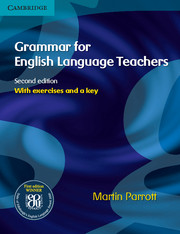28 - Non-finite clauses
Published online by Cambridge University Press: 09 February 2023
Summary
Key considerations
Non-finite clauses can bewilder learners and can even distract their attention from what they do understand. We can help learners to overcome these problems by systematically drawing their attention to non-finite clauses in texts that they read, and by encouraging them to develop and use a mental checklist of functions these clauses frequently have. This, and careful attention to the contexts they are used in, can help them to work out the precise meaning of a particular clause.
In order to speak idiomatically and to write in appropriate styles, learners need not only to recognise and understand non-finite clauses, but also to use them. We can provide them with controlled exercises which, for example, involve using non-finite clauses to combine two sentences into one. We can also help them by monitoring and guiding them during the actual process of writing, and at a later stage we can show them where they could have used non-finite clauses in order to express themselves more succinctly and fluently. There are several different kinds of non-finite clause. Learners may find it helpful if we teach them separately, and if they concentrate on using different types at different times.
Learners often seek ‘rules’ to help them decide where to put the non-finite clause within the sentence. In fact, decisions about sentence position necessarily depend on context and emphasis, and often need to be made sentence by sentence.
What are non-finite clauses?
What do they look like?
Non-finite clauses are those in which the only verb is in a participle or infinitive form, or those which have no verb at all. We call them ‘non-finite’ clauses because they don’t contain a finite verb (i.e. a verb which has a subject and a tense form, or is imperative). The main categories of non-finite clause are:
We look at different types of non-finite clause in more detail below and at their uses in more detail on pp 421–3.
Participle clauses
We can use a perfect form of a present participle (having + past participle).
- Type
- Chapter
- Information
- Grammar for English Language Teachers , pp. 418 - 432Publisher: Cambridge University PressPrint publication year: 2010



